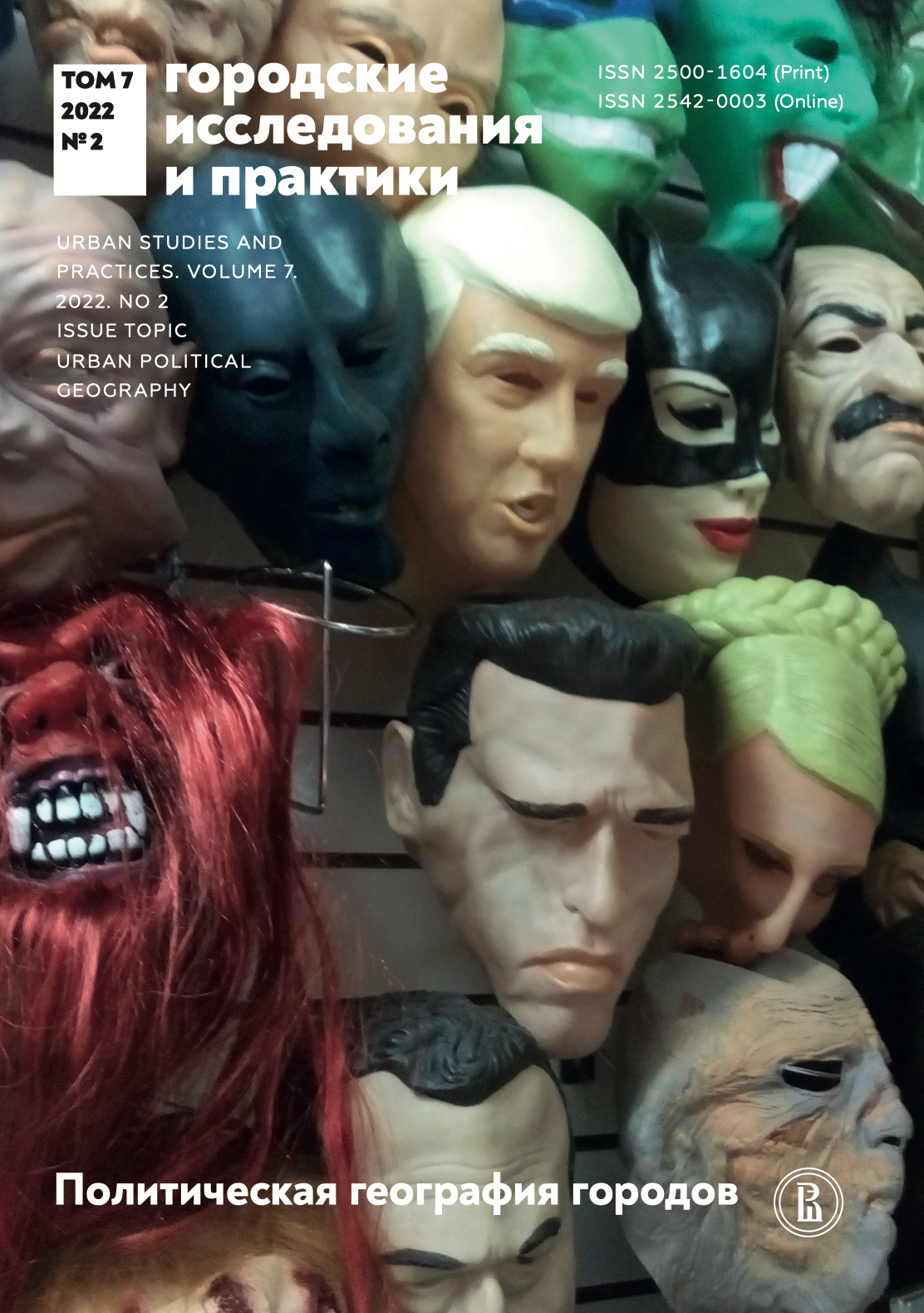Everything is (not) Going According to a Plan: The Impact of Redlining on Socioeconomic and Politic Differentiation of Chicago
Abstract
This article addresses the question of the continuing influence of the policy of redlining (dividing the city into quarters based on the risks of issuing mortgages), carried out in the 19301950s, on the racial, socioeconomic and electoral differentiation of Chicago. This city was chosen because the theoretical models of the researchers of the Chicago School of Sociology were developed using it as an example, and on the basis of which political decisions were made about the division—in fact, the segregation—of the city. Hoyt played a leading role in the implementation of these theoretical views. Within his model, permanent segregation by race was considered a logical consequence of the market economy, and not only did not need to be fought, but should have been fixed in planning decisions if this would lead to an increase in economic efficiency. Consequently, the Chicago area was divided into four categories: A (“the best” neighborhoods), B (“still desirable”), C (“definitely declining”), D (“hazardous”). As valuations fell, the likelihood of a mortgage (or refinancing an existing problem mortgage), the main form of supporting demand in the housing market after the Great Depression, also decreased. In “hazardous” areas, this probability was zero. This study checked whether racial and socioeconomic differentiation obeys the logic set by the redlining policy, and whether this logic has implications for the last presidential election. For this, the DardenKamel composite socioeconomic index was calculated and the racial composition was analyzed in the context of the types of quarters identified in 1935. The results of the 2020 presidential election were also analyzed. As a result, Chicago was found to be differentiated differently than the redlining pattern suggested. The growth of the population of two racial groups, practically unrepresented in the 1930s–1950s (Hispanics and Asian Americans), has strongly altered this pattern and disrupted the racial status quo.
Downloads
References
Алов И. Н. (2021) Эволюция концепций пространственной сегрегации в городах США // Региональные исследования. No 1 (71). С. 107–117.
Фуко М. (2018) Надзирать и наказывать: рождение тюрьмы. Москва: Ад Маргинем.
ACS (2022) American Community Survey (ACS). Режим доступа: [https://www.census.gov/programs-surveys/acs](https://www.census.gov/programs-surveys/acs) (дата обращения: 28.08.2021).
Burgess E. W. (1928) Residential Segregation in American Cities // The ANNALS of the American Academy of Political and Social Science. Vol. 140 (1). P. 105–115.
Clark K. B. (1965) Dark Ghetto: Dilemmas of Social Power. New York: Harper.
Darden J. T., Kamel S. M. (2000) Black Residential Segregation in the City and Suburbs of Detroit: Does Socioeconomic Status Matter? // Journal of Urban Affairs. Vol. 22. P. 1–13.
Darden J. T., Malega R., Stallings R. (2019) Social and Economic Consequences of Black Residential Segregation by Neighbourhood Socioeconomic Characteristics: The Case of Metropolitan Detroit // Urban Studies. Vol. 56 (1). P. 115–130.
Darden J. T., Rahbar M., Jezierski L. (2010) The Measurement of Neighborhood Socioeconomic Characteristics and Black and White Residential Segregation in Metropolitan Detroit: Implications for the Study of Social Disparities in Health // Annals of the Association of American Geographers. Vol. 100. P. 137–158.
Duncan O. D., Duncan B. (1955) A Methodological Analysis of Segregation Indices // American Sociological Review. Vol. 20. P. 210–217.
Fishback P. V., Rose J., Snowden K. A. (2013) Well Worth Saving: How the New Deal Safeguarded Home Ownership. University of Chicago Press.
Harvey D. W. (1972) Revolutionary and Counter Revolutionary Theory in Geography and the Problem of Ghetto Formation // Antipode. Vol. 4 (2). P. 1–13.
Hernandez J. (2004) Redlining Revisited: Mortgage Lending Patterns in Sacramento 1930–2004 // International Journal of Urban and Regional Research. Vol. 33. P. 291–313.
Hillier A. E. (2003) Redlining and the Home Owners’ Loan Corporation // Journal of Urban History. Vol. 29 (4). P. 394–420.
Hoyt H. (1933) One Hundred Years of Land Values in Chicago: The Relationship of the Growth of Chicago to the Rise of Its Land Values, 1830–1933. Chicago: University of Chicago Press.
Hoyt H. (1939) The Structure and Growth of Residential Neighborhoods in the United States. Washington, DC: Federal Housing Administration.
Jackson P. (1985) Social geography: race and racism // Progress in Human Geography. Vol. 10. P. 118–124.
Light J. (2011) Discriminating Appraisals: Cartography, Computation, and Access to Federal Mortgage Insurance in the 1930s // Technology and Culture. Vol. 52 (3). P. 485–522.
Marcuse P. (1989) “Dual City”: a Muddy Metaphor for a Quartered City? // International Journal of Urban and Regional Research. Vol. 13 (4). P. 697–708.
Massey D. S., Denton N. A. (1993) American Apartheid: Segregation and the Making of the Underclass. Cambridge: Harvard University Press.
Myrdal K. G. (1944) An American Dilemma: The Negro Problem and Modern Democracy. New York: Harper & Bros.
Reardon S. F. (2015) Neighborhood Income Composition by Household Race and Income, 1990–2009 // The ANNALS of the American Academy of Political and Social Science. Vol. 660 (1). P. 78–97.
Rothstein R. (2017) The Color of Law: A Forgotten History of How Our Government Segregated America. New York: Liveright.
Sampson R. J., Morenoff J. D., Gannon-Rowley T. (2002) Assessing “Neighborhood Effects”: Social Processes and New Directions in Research // Annual Review of Sociology. Vol. 28. P. 443–478.
Wacquant L. (1996) The Rise of Advanced Marginality: Notes on its Nature and Implications // Acta Sociologica. Vol. 39 (2). P. 121–139.
Wacquant L. (1999) Urban Marginality in the Coming Millennium // Urban Studies. Vol. 36 (10). P. 1639–1647.
Wacquant L. (2008) Urban Outcasts: A Comparative Sociology of Advanced Marginality. Cambridge: Polity Press.
Wilson W. J. (1987) The Truly Disadvantaged: The Inner City, The Underclass and Public Policy. University of Chicago Press.

